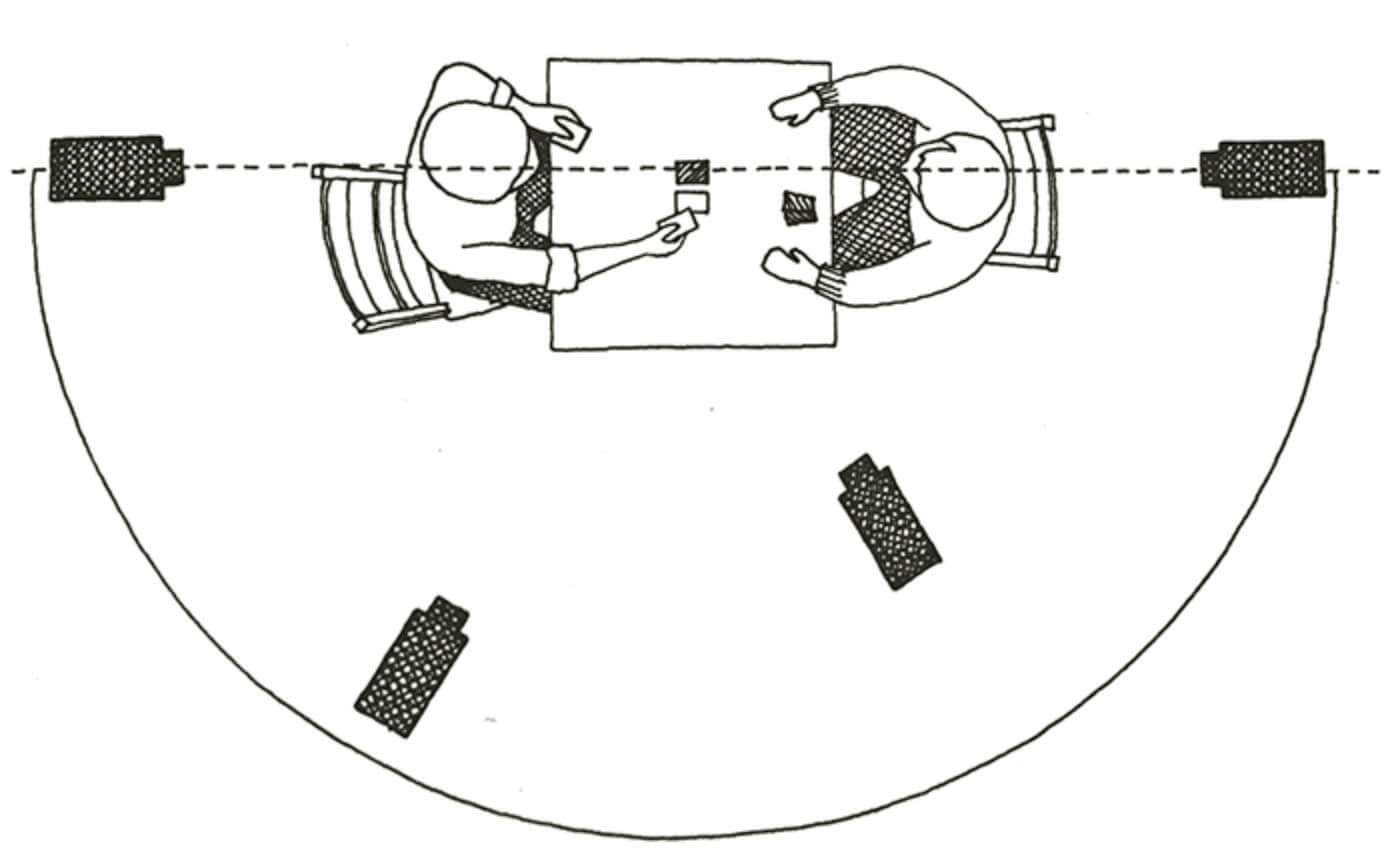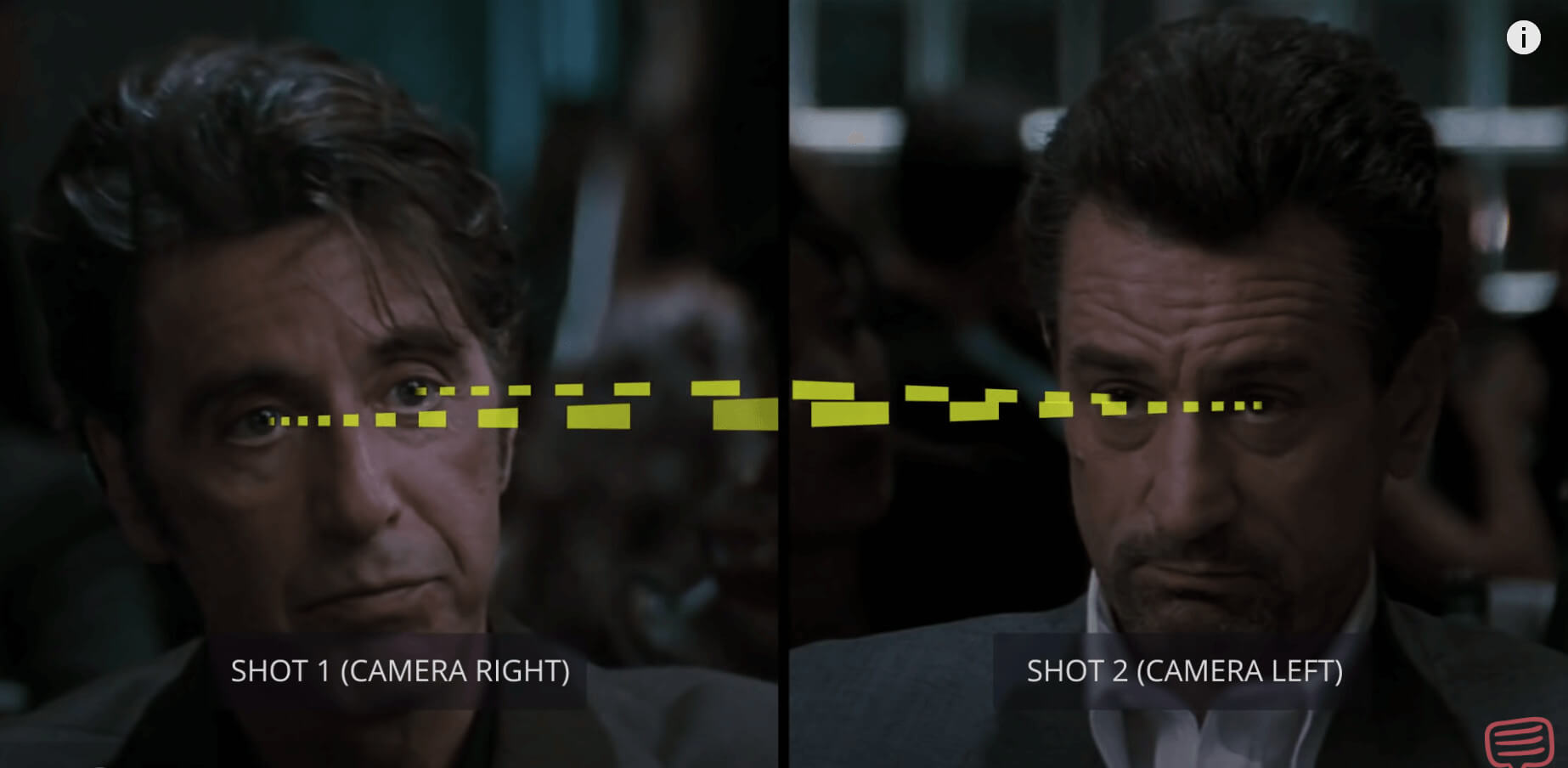The 180-degree rule is one of the most important rules for beginning and advanced filmmakers.
This rule keeps audiences immersed; breaking it can often lead to a viewer being disoriented.
But, that isn’t to say that there isn’t a place for breaking this rule in film. In this post, we’ll cover how to follow, and also situations where you can bend or break the 180-degree rule. Let’s start with how it works in film.
Jump to section:
Send Large Files Without Zipping
Drag entire folders into MASV. We maintain their structure.
What is the 180-Degree Rule?
The 180-degree rule is an invisible straight line that creates spatial awareness of the characters on-screen. It tells viewers where characters are situated so that when the camera angle changes, our brains know who is where.
It states that the camera(s) should stay on one side of an interaction.
Here’s an example from the Filmmaker’s Handbook:

The simplest way to think about the rule is in sports; imagine watching football (or most other linear sports) on TV. If after every play they switched to a camera on the opposite end of the field, you would be confused. You just saw your team on the left marching down the field towards the right — and things are flipped in the opposite direction? It would be confusing and disorienting for viewers.
Back to film, here you see the 180-degree rule in practice in the movie Heat with Robert DeNiro and Al Pacino:

Source: StudioBinder on YouTube
You do this to give a sense or orientation for the viewer, the way the cameras are positioned in the above shot, when you cut to each individual it looks like they’re looking at each other. Whereas, if a camera was placed across the 180-degree plane, it would feel a little off for viewers.
Stop Compressing Files Before Transfer
MASV can send RAW and uncompressed files to anywhere in the world, fast.
Can you Break the 180-Degree Rule?
It depends. While there are places we see it used intentionally in film, for the most part, I’d recommend shooting for the 180-degree rule as a general guideline. But video is evolving, and things that were faux pas before (eg. lens flare), is now accepted today.
Here are a few directors and cinematographers that broke the 180-degree rule, and here’s why they did it:
Cinematographer Matty Libatique and Director Darren Aronofsky break the 180-degree rule to mark a tonal shift in the movie Requiem for a Dream:
“The 180-degree rule or stage line is a convention of film grammar… We wanted to use the distinction between sides of the line to mark a change in tone… in a single moment, life has shifted for these characters.”
Another example of a tonal shift is used by Stanley Kubrik, who is frequently cited as being the greatest cinematographer in history. He breaks the 180-degree rule in his popular horror movie, The Shining, to elicit a shift in identity.
For more, Film Riot, has a short video on quick tips on when to break the 180-degree rule:
Following the 180-Degree Rule as a Beginner
For bigger productions, it’s generally left to the storyboard artist, and of course, the cinematographers and directors. But the concept does still apply to a solo filmmaker with a single camera setup. In fact, it’s harder with a single camera. With two cameras, it’s much easier to picture the 180-degree plane and keep the cameras on one side of it. So when you’re shooting interviews, have an idea of where your 180-degree plane is, and have a marker (that won’t be in the shot) that designates where the shots will take place. If you want to break the rule – have a reason why.
As a general guideline, following the 180-degree rule is a smart framework to successful filmmaking, but the best know when to break or bend the rules. Keep that in mind for your next film and don’t be afraid to experiment!
Are you a filmmaker in need of a better way to move large media files? Use MASV and send up to 15 TB of data to teammates, fast. Sign up today and get 20 GB for free.
MASV File Transfer
Get 20 GB to use with the fastest, large file transfer service available today, MASV.